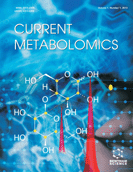Abstract
Injudicious over-consumption of fossil fuels over the last century has generated an imbalance in the carbon cycle, dramatically increasing atmospheric carbon dioxide and contributing to climate change. Much of the released carbon is ancient, accumulating in the earth’s crust in the form of oil, coal or methane gas over millions of years. In contrast, the carbon in biofuels has only recently been sequestered from the atmosphere as a result of photosynthesis. From this perspective, the release of carbon dioxide from biofuels can be viewed as carbon neutral making biofuels particularly attractive as an energy source. First generation biofuels relied primarily on cereal starch as a source of glucose for biofuel production, a practice that faced scrutiny due to its competition for human food, its impact on biodiversity and reliance on chemical fertilizers and fossil fuels for harvest. Second generation biofuels focused on lignocellulosic waste as a carbon resource for bioenergy production. Cellulosic biomass is the most abundant of the renewable resources and represents an enormous storehouse of sugars. However, plant cell walls are chemically complex, heterogeneous structures that have evolved to counter the process of enzymatic digestion. The layered structure with cross-linkages among cellulose, xylan and lignin are examples of the recalcitrant moieties that resist enzymatic breakdown. The use of exogenous enzymes or chemical treatment to weaken these barriers is expensive and typically achieves only partial hydrolysis. Recent advancements in plant genetic engineering have demonstrated the potential to design plants for improved cell wall deconstruction as well as to produce cell wall carbohydrases within the plant biomass. These technologies offer significant promise to lower the cost of production of biofuels from lignocellulosic biomass. In this review, we provide summary of recent research efforts focused on improving the biomass characteristics of plants for biofuel production through alteration of the major cell wall biosynthesis genes or pathways.
Keywords: Biofuel, biomass, cell wall, genetic engineering, lignin, lignocellulose, transcription factor.
 38
38 1
1

















